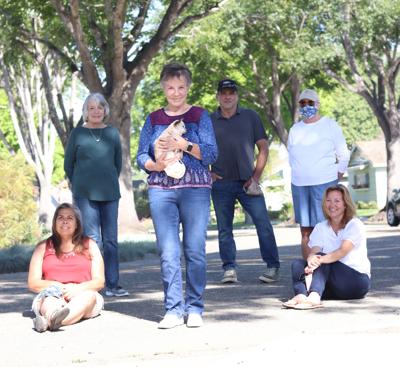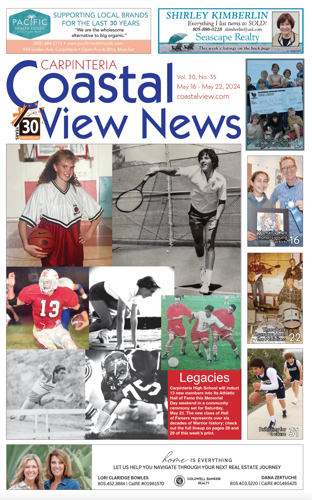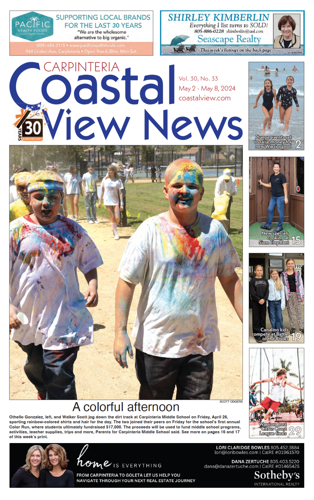Editor's note: There’s nothing like a global pandemic to remind us of how lucky we are to live in a small, tight-knit community where no one is a stranger and everyone deserves compassion. For some Carpinterians, the COVID-19 pandemic became their Superman phone booth, the time and place to switch on their powers. We marvel at what so many community members have done to make the discomfort bearable and sometimes even beautiful. When the going gets tough, these Carpinterians get going.
In mid-February, 80-year-old Pat Beals, a retired Halloween costume manufacturer, started making cloth face masks in her Arbol Verde garage. By mid-March, over a dozen Concha Loma neighbors had joined Beals’ grassroots production chain, making a staggering 3,000 cloth masks by the first week in April. By then, the group had given itself a name, Neighbor to Neighbor, and had made enough masks for retail, food, and medical workers in Carpinteria. With no plans to slow down, the mask-making brigade grew in numbers, and by the end of May had completed 9,600 masks with 69 volunteers.
Beals has a background in mass production. She’s the founder of Teetot & Company, Inc., a family-run Halloween costume company that supplies Costco and other big box stores. She taught mass production in China for 20 years. Now, working with a group of home sewers—including 12 from Carpinteria Community Church’s Crafty Ladies—she’s pointed that expertise towards a formidable goal: getting a mask on every adult in Carpinteria.
The group’s first target was to cover the homeless population; once accomplished, they swiftly started distributing their brightly colored 100-percent cotton masks to grocery store employees, retail shops, restaurants, and health care agencies. Soon they were fielding calls from all over Carpinteria and Santa Barbara.
“Our goal was to put a mask on every adult face in Carp and I think we’ve come pretty close to that,” says Beals. “Santa Barbara institutions kept asking us to make their masks, but we told them they had to wait until we finish our hometown. And we stuck to that.”
On the neighborhood production line, Beals has assigned volunteers to specific details that are led by captains. Some wash, dry and iron, others cut fabric, wire or elastic, and there are many behind sewing machines. All sections are done in sets of 20. This division of labor and clear organization has contributed to the group’s ability to produce at high volumes.
“Most of the credit belongs to the strong, caring women of Carpinteria who worked at their sewing machines for hours every day, months on end, after they fed their husbands and children,” says Beals. “Carpinteria women are a force to be saluted.”



















(0) comments
Welcome to the discussion.
Log In
Keep it Clean. Please avoid obscene, vulgar, lewd, racist or sexually-oriented language.
PLEASE TURN OFF YOUR CAPS LOCK.
Don't Threaten. Threats of harming another person will not be tolerated.
Be Truthful. Don't knowingly lie about anyone or anything.
Be Nice. No racism, sexism or any sort of -ism that is degrading to another person.
Be Proactive. Use the 'Report' link on each comment to let us know of abusive posts.
Share with Us. We'd love to hear eyewitness accounts, the history behind an article.